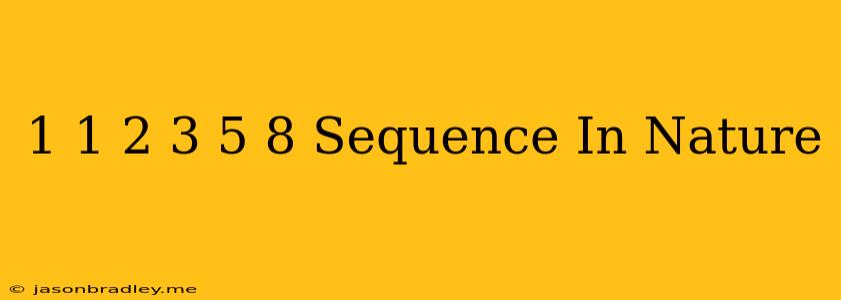The Fibonacci Sequence in Nature: A Hidden Code
The Fibonacci sequence, a series of numbers where each number is the sum of the two preceding ones (1, 1, 2, 3, 5, 8, 13, 21...), is not just a mathematical curiosity. It appears in nature in astonishingly diverse ways, suggesting a fundamental principle at play. Here's a glimpse into how the Fibonacci sequence manifests in the natural world:
Plants and Trees
- Phyllotaxis: This is the arrangement of leaves on a stem. The Fibonacci sequence dictates the spiral pattern of leaves, maximizing sunlight exposure for each leaf. Observe the spirals on a sunflower, a pinecone, or a pineapple, and you'll find that the number of spirals in each direction often corresponds to consecutive Fibonacci numbers.
- Branching Patterns: Trees often exhibit branching patterns that follow the Fibonacci sequence. Each branch can be seen as a new starting point for the sequence, with the number of branches at each level roughly adhering to the Fibonacci pattern.
Animals
- Shell Spirals: The spiral shells of sea creatures like nautilus and snails follow the Fibonacci sequence, with the ratio between consecutive chambers closely approximating the golden ratio (approximately 1.618).
- Honeycomb Construction: The hexagonal cells of a honeycomb are designed for maximum efficiency, with the ratio between adjacent cells again reflecting the golden ratio.
Beyond Plants and Animals
- Hurricanes: The spiral patterns of hurricanes, with their eye in the center, closely resemble the Fibonacci spirals.
- Human Body: The proportions of the human body, from the distance between the fingertips to the elbow, to the height of the body, have been linked to the Fibonacci sequence and the golden ratio.
The Golden Ratio: A Link to the Fibonacci Sequence
The golden ratio, represented by the Greek letter phi (Φ), is closely related to the Fibonacci sequence. It is approximately equal to 1.618 and can be derived by dividing any two consecutive numbers in the Fibonacci sequence. The golden ratio appears in various natural phenomena, including the spiral patterns mentioned above.
Conclusion
The Fibonacci sequence and the golden ratio are fascinating examples of mathematical principles at play in the natural world. While their precise role in biological processes is still being investigated, their prevalence in nature suggests a fundamental connection between mathematics and the organic world. Whether you're observing the spirals of a nautilus shell, the branching of a tree, or the patterns of a sunflower, you're witnessing the elegant and intricate beauty of the Fibonacci sequence in action.
